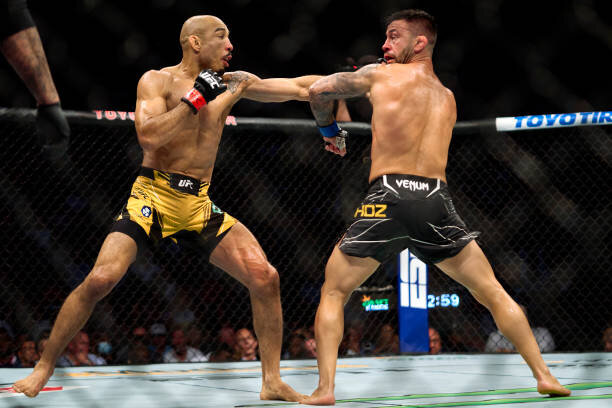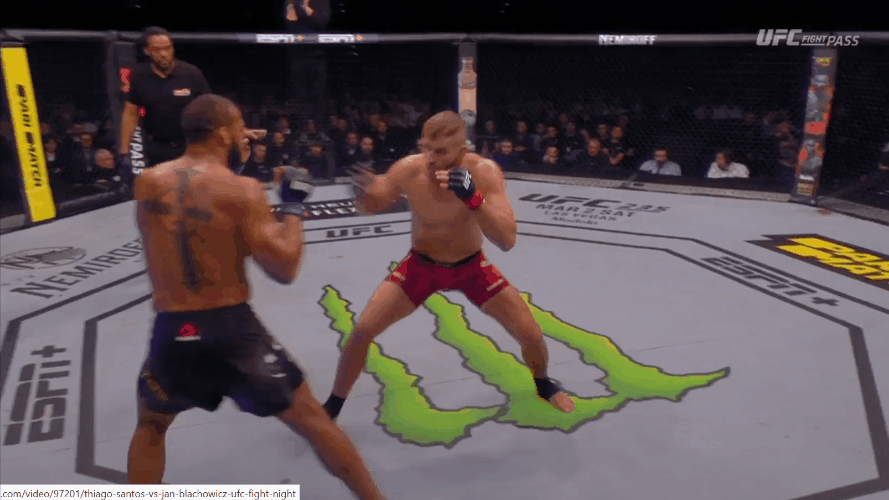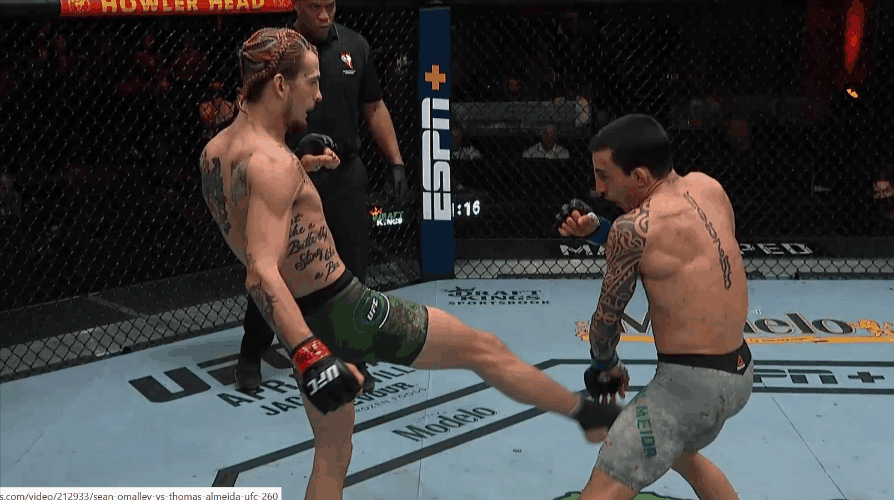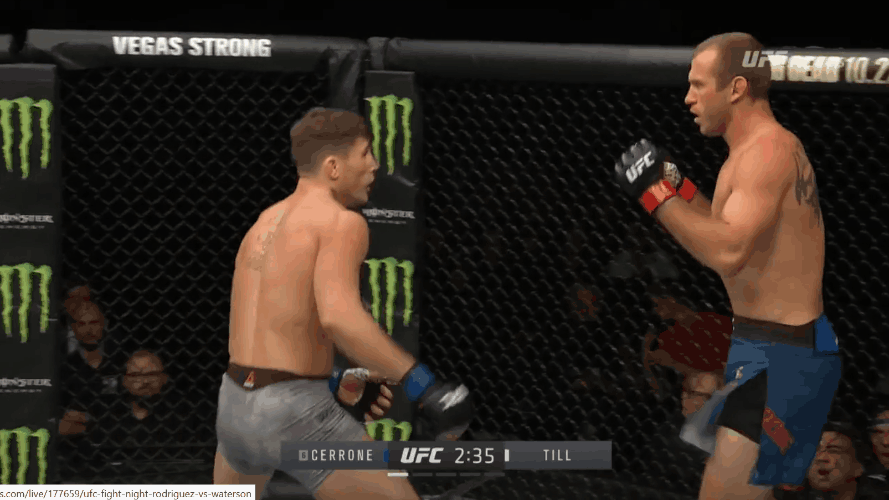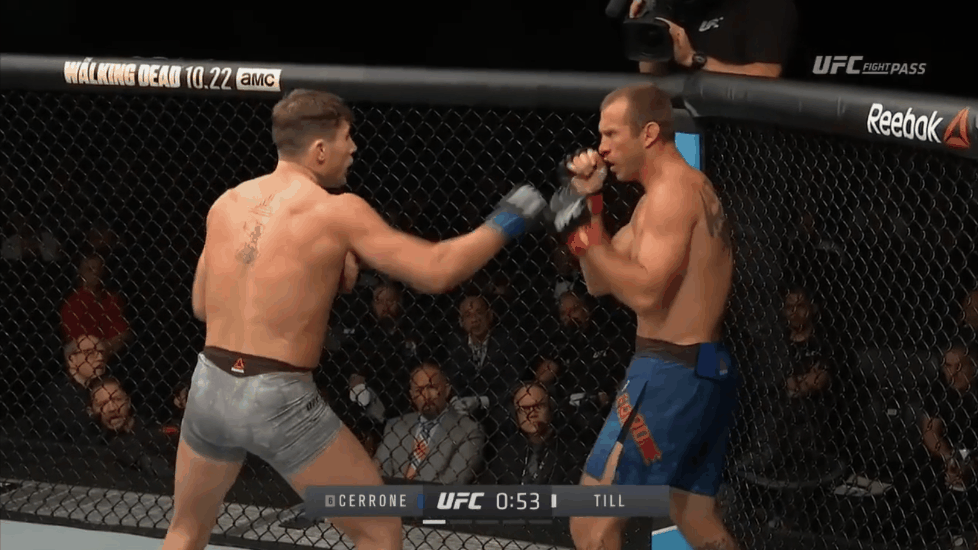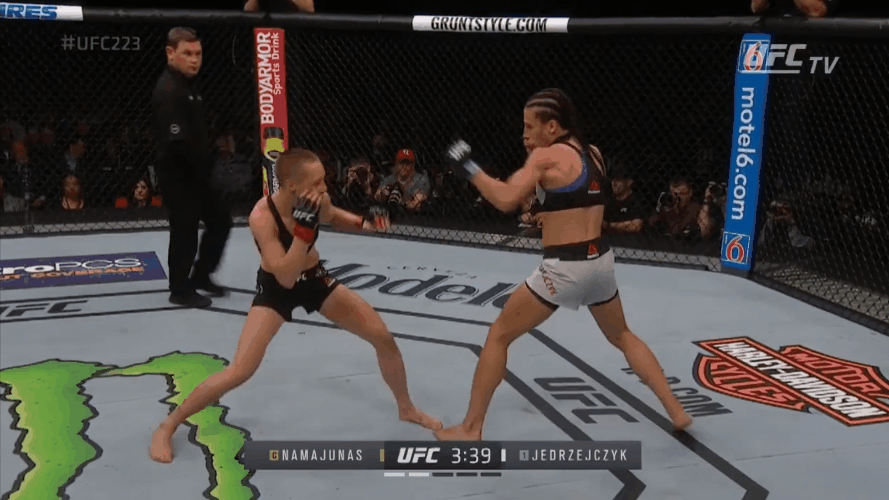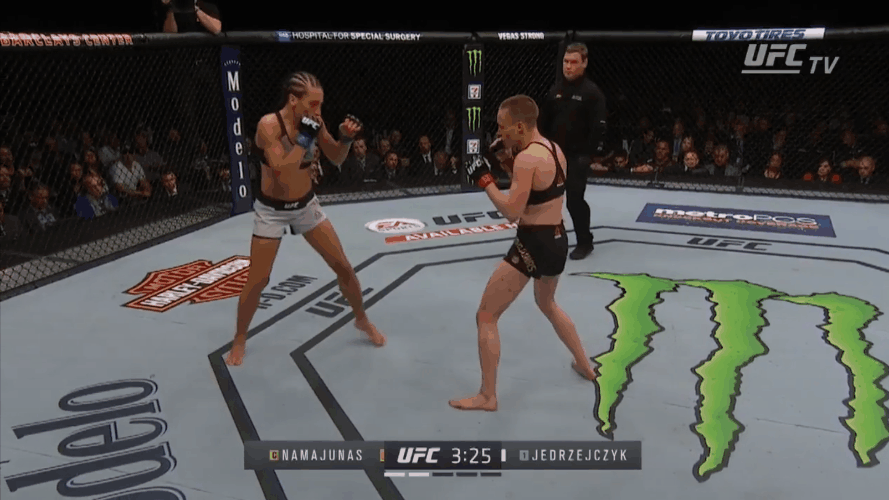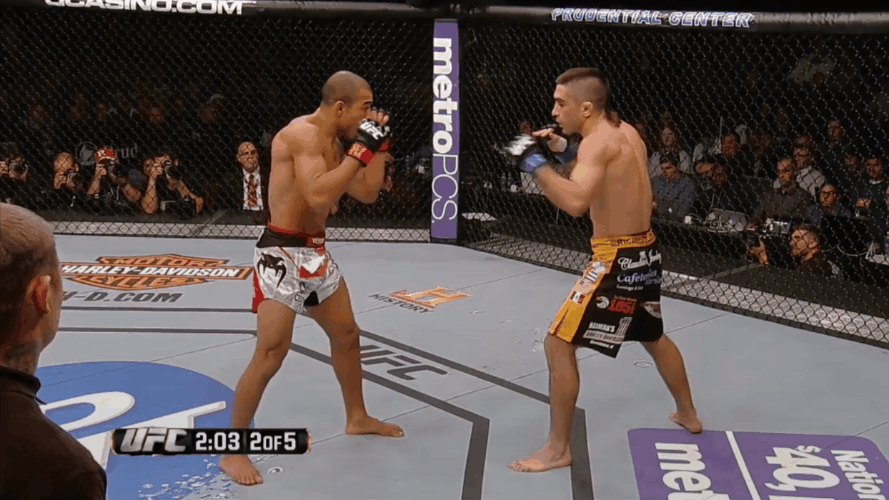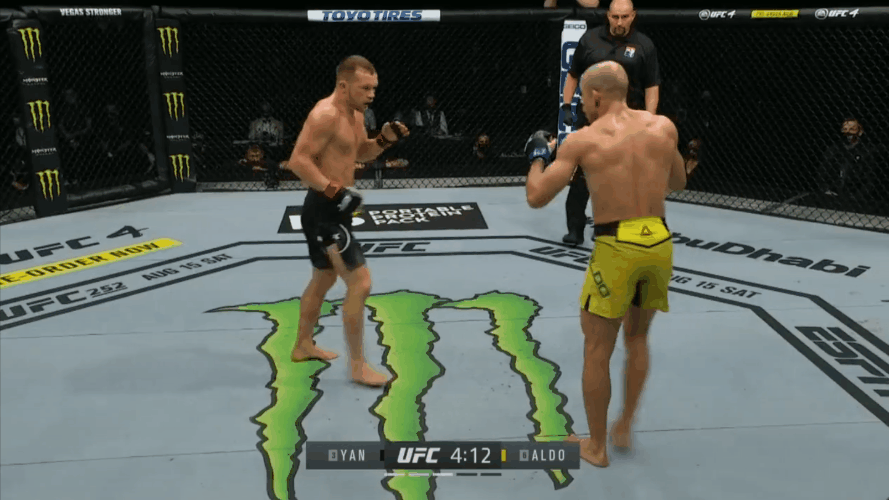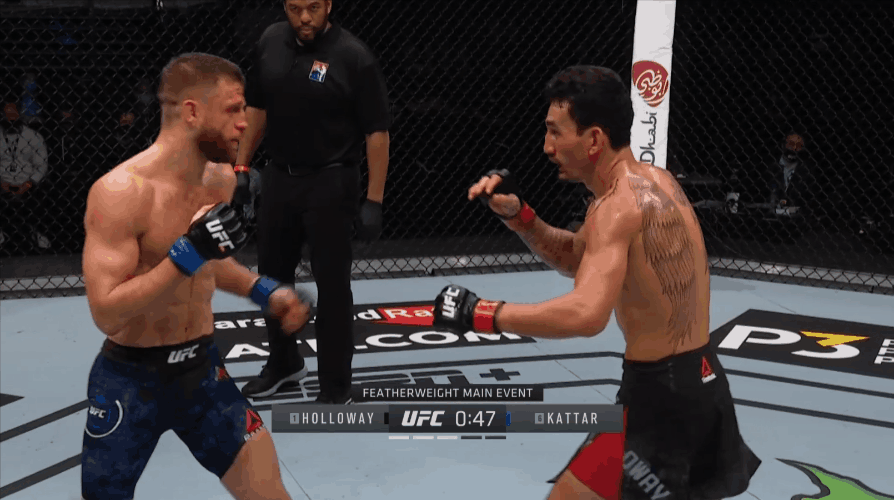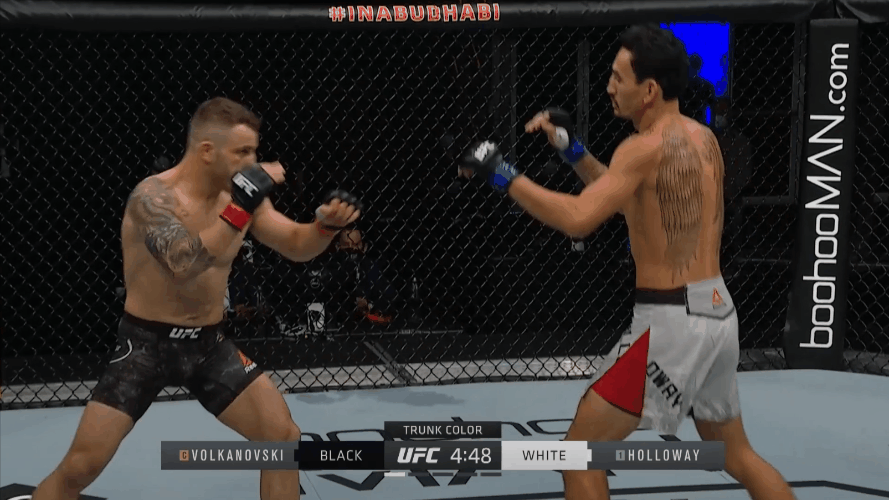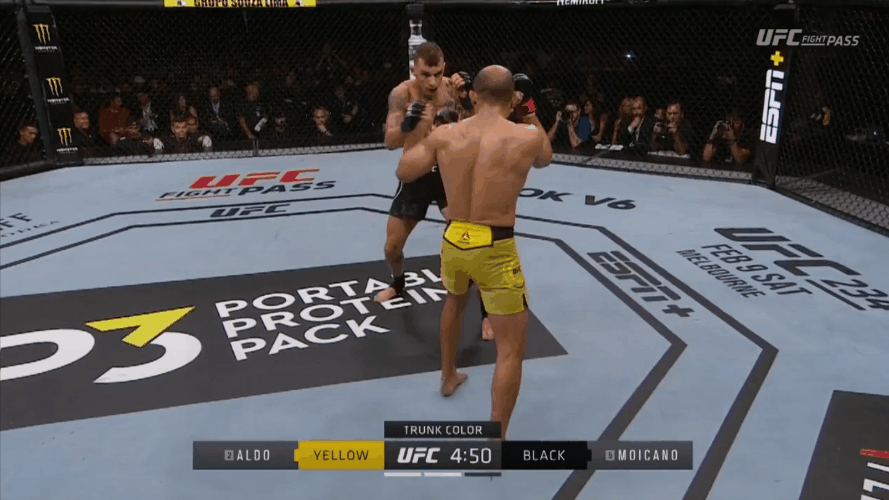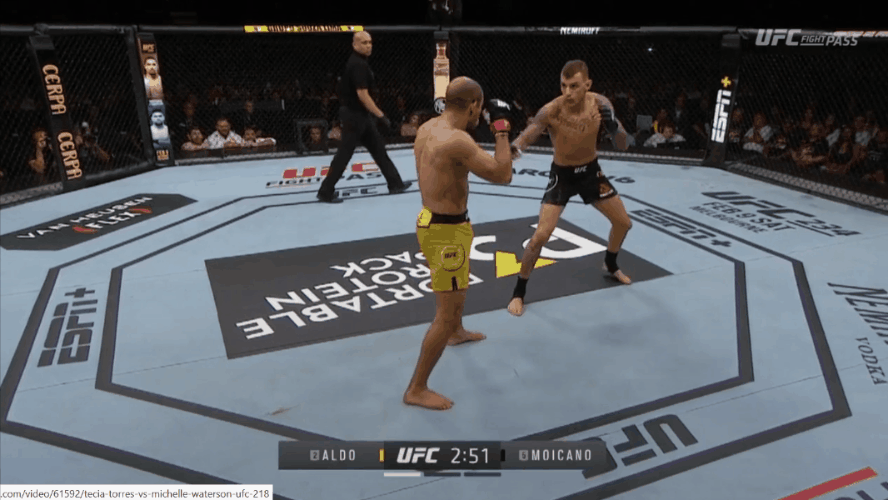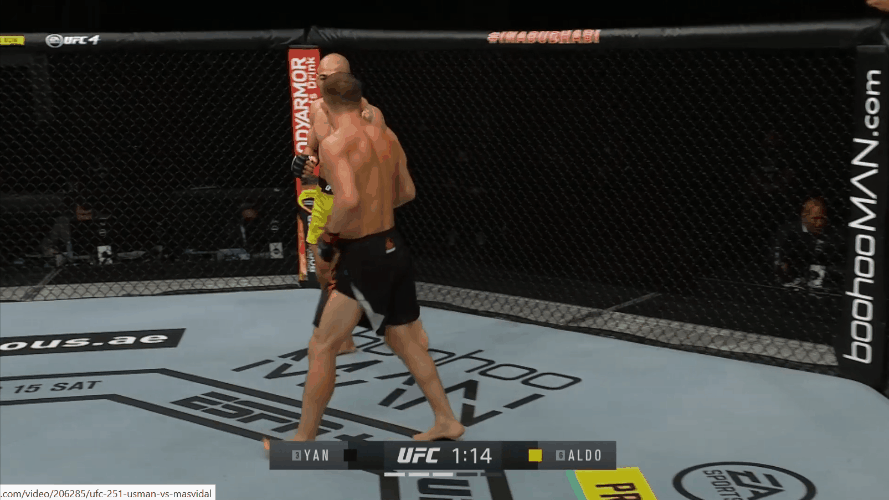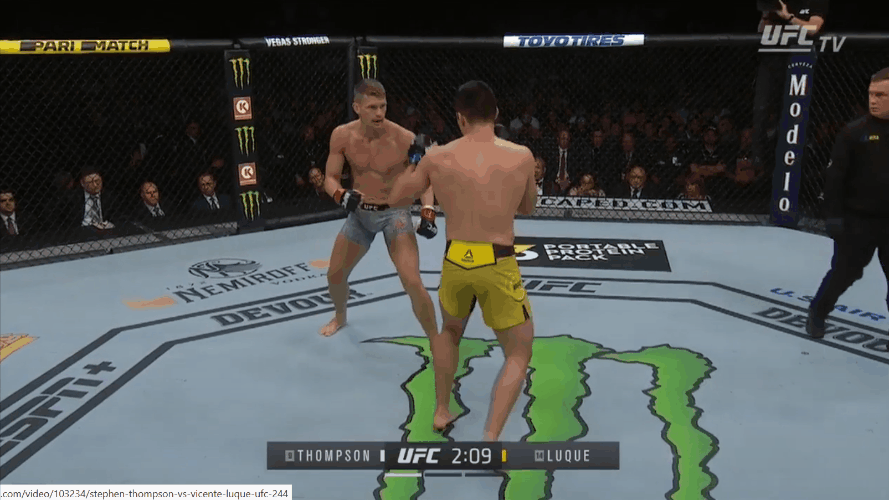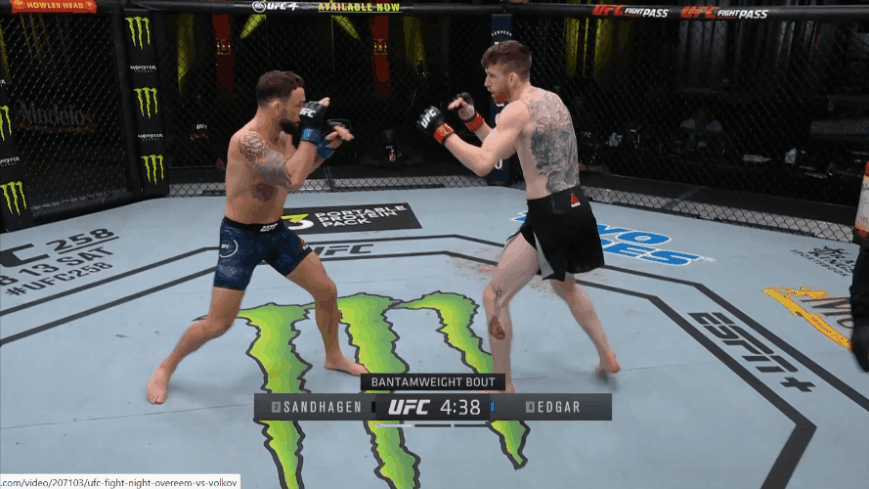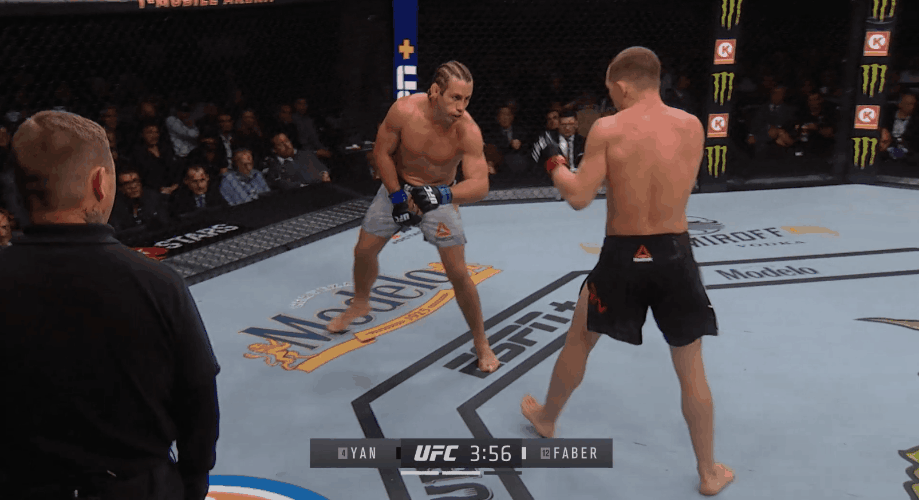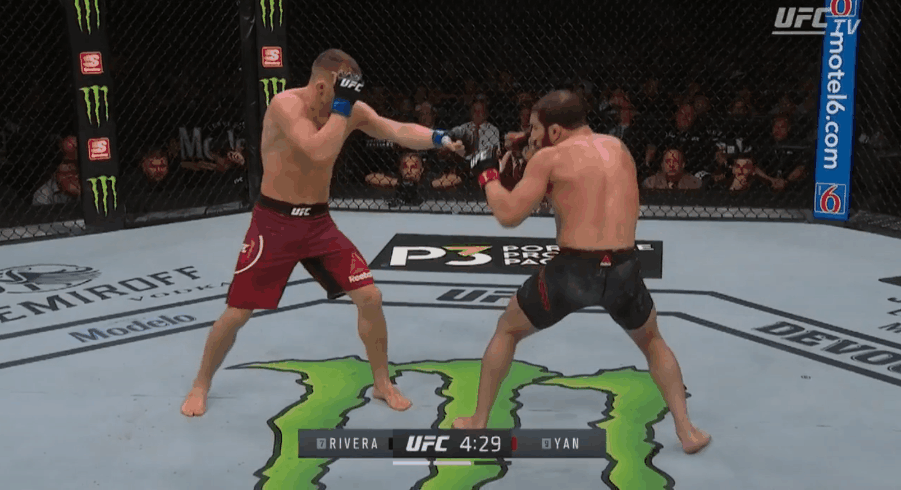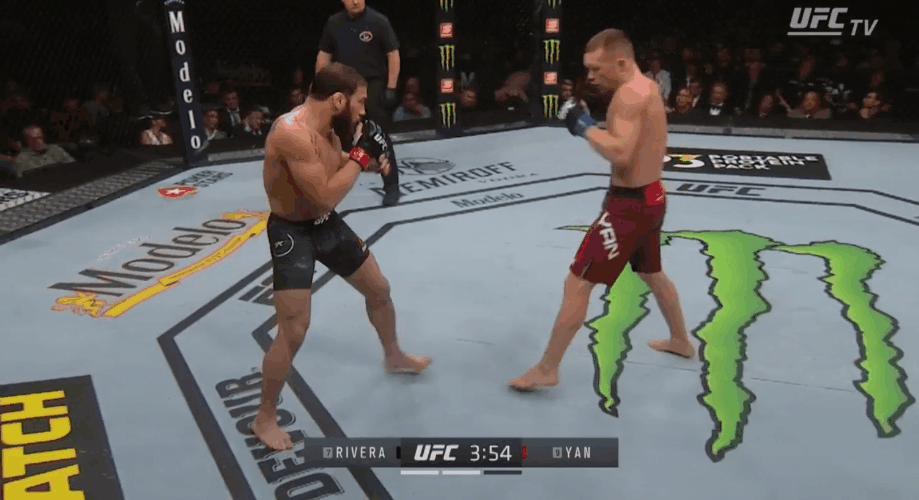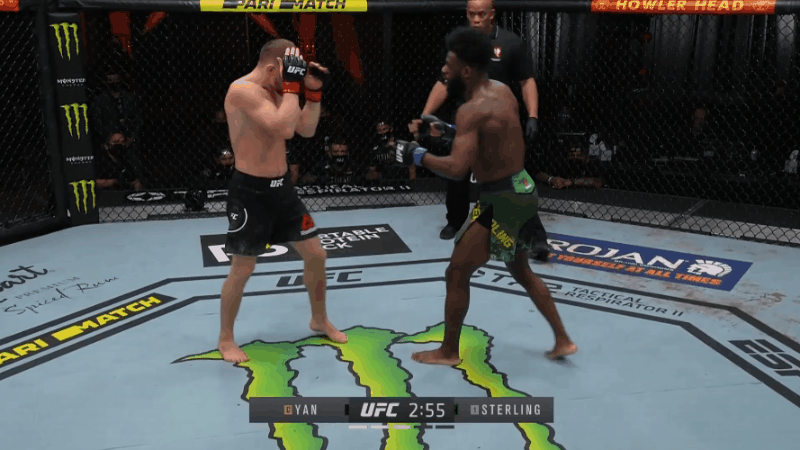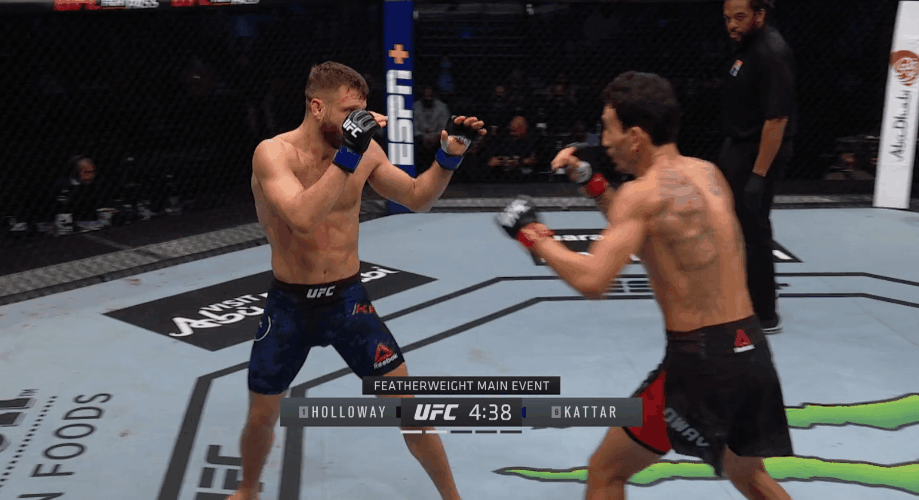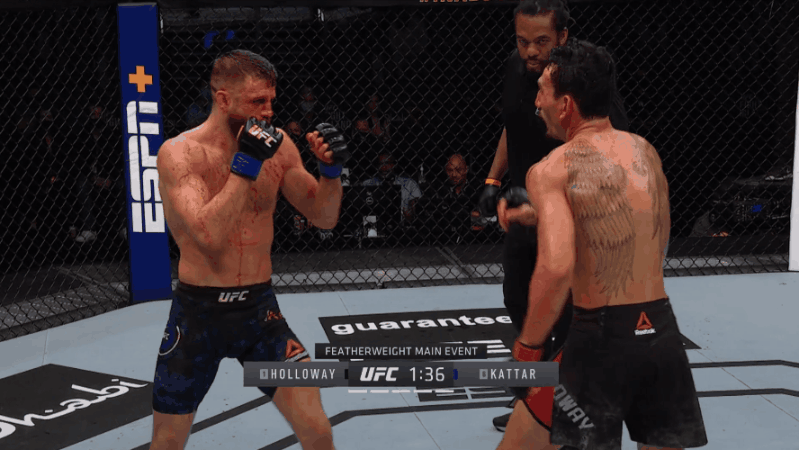First Steps: Footwork in MMA
Photo by Cooper Neill/Getty Images
Co-written with Łukasz Fenrych.
“Learn to walk before you run.”
A pretty basic idiom as idioms go, but one that has some strikingly apposite connotations with MMA.
Footwork is the starting point for all the work you can hope to achieve in the cage; from the moment when the bell rings, how you set your feet will have a huge part to play in how your fortunes play out.
Your feet are the levers against which you generate power, be it a rear straight or a power double. Thus, it’s important to learn the basics in order to maximise the effects of your power, however you wish to apply it.
In the following article, we shall lay out four basic applications of footwork that we can observe in MMA contemporaneously, with some good examples, and some examples we would argue are less than ideal.
(And fair warning; this is a Fight Site article so yes, Aldo is going to feature.)
Form
We should note, at the outset, that with MMA’s sheer number of offensive permutations, it’s basically impossible to pin down a ‘correct’ way of approaching footwork, but there are still some core tenets that if they are violated, can be considered objectively ‘wrong’. You’ll see pundits and analysts refer to ‘form’ and ‘mechanics’ a lot - we will be here. What is typically meant by that is the quality of delivery of what is happening. A punch with good form will be delivered with no excess motion, usually driving power right from the floor, and not leave the thrower overbalanced or exposed to counters.
The thing is that MMA is an exercise in compromise. It’s not just that there are certain things you can and should do in pure striking sports that are inadvisable when takedowns (and kicking, in the case of boxing skills) are a threat: it’s also that setting yourself up purely for one or the other is taking tools out of your own pocket. So doing things with one specific aim in mind, offensive or defensive, might look better on a mechanical level but not cover all the options a moment brings, and therefore be less useful than scruffier responses.
So this article will not be laying out a how to guide for ‘the best’ form for footwork, but be exploring the myriad ways it can be used well, and some ways that, even with MMAs enormous technical progressions, it is still lacking overall compared to the legacy striking arts, taking in some particularly common mistakes or misconceptions.
Having said that, it’s probably safe to argue that there are at least two basic rules a fighter should try not to break when stepping. Fighting, and just basic rules of human movement mean it’s almost impossible to strictly adhere to these at all times, but attempts should be made to
Get caught on one foot as little as possible
Limit stepping across oneself as much as is feasible
The easiest and first way to mitigate this is to enact the ‘step-and-slide’. Basically, if the fighter is right-handed, his left foot will be placed out ahead of him, and thus it will stay. If he wants to move forward, he should begin the movement with the lead leg — so, left if proceeding forward, right if moving back.
Thus he ensures there is always a leg properly behind him ready to brace when attacked.
Although this good form is not universal, it is thankfully a much more widely used motion in modern MMA.
Examples of it being used to good effect will be expounded upon later in the article, but it is pertinent to show examples of it being utterly abandoned by fighters in a state of excitement, to see what it looks like, and how it can go wrong;
So here we see a good example of a very good fighter, Weili Zhang, getting her way with Jessica Andrade in a clinch, and spamming attacks to victorious effect. Note the footwork though. While it got her to where she wanted to be, it was not what could be termed ‘good’.
Here is an example of when it can go wrong:
The other rather hard and fast rule is that a fighter should never cross their stance.
Imagine that, in a fighter’s initial stance, the feet are slightly apart, with an imaginary line intersecting the floor in between, along the fighter’s longitudinal axis.
This stance, one foot slightly ahead and feet slightly apart, allows for maximised bracing positions; anyone who’s attended boxing 101 knows it’s very hard to push someone back when stood as so.
It also allows for lateral movement, with both feet ready to push off in either direction, and a base steady enough to allow for good, balanced movements of the upper body too.
Cross that imaginary longitudinal line, and that base is not just narrowed, but suddenly biased entirely to one side, degrading the fighter’s ability to safely absorb a strike;
… while also vastly narrowing maneuverability and opening the fighter up to destabilising leg kicks to boot.
Offence
We’ve shown an example of bad footwork, so let’s be a little more positive for a few paragraphs.
To elaborate on the Zhang/Blachowicz example as laid out above; they were examples of how it shouldn’t be done, so let’s have a look at how it can be done well.
To that end, perhaps surprisingly, enter Darren Till.
The Liverpudlian is primarily a kickboxer, and it shows in his crafty and proficient footwork, but the one aspect that really stood out in his breakout win over Donald Cerrone is how right he gets the fundamentals; keeping his feet underneath him.
Witness, as he advances on Cerrone, even when only throwing one or two, his chest is always within his stance, unlike the aforementioned Zhang, who relied on momentum to keep her upright in the exchange.
He doesn’t overextend, so it allows him to recover his momentum and shift back at a moment’s notice, something that was never a possibility for Big Jan up there;
And, it allows him to extend combinations with ease when he gets a chance, such as when he elbows Cerrone into insensibility here;
Notice how easily his footwork allows him to maintain a close and easy distance to his target; his short, measured steps are a model of efficiency and poise compared to the gallop introduced earlier.
Now, as well as being the platform for action, footwork can also directly tie into offence in and of itself.
For this I’m going to look at a strawweight fight between two former UFC champions; in 2018, American Rose Namajunas and Poland’s Joanna Jedrzejczyk.
These two are both striking-first operators, and present a nicely high-level contrast in footwork styles for us to break down.
Jedrzejczyk (JJ), the erstwhile strawweight boogeywoman, is not known for her power. She rarely knocks women out or even down, but she is known for absurd offensive volume.
An extremely prolific striker, her style is therefore facilitated by her footwork — because she is not setting herself up for big power punches, she can be very light on her feet, evenly balanced to dart quickly in and out of range, and poised to kick at a split-seconds notice.
JJ utilises her opponents’ desire to come at her to initiate attacks; a lot of the damage she deals is helped by them walking or jumping into her strikes. And as someone who likes to draw people in, this means she can commit less weight to her front foot in order to strike effectively; her lack of outright power can at least partly be attributed to this striking form.
This does result in a lot of her blows manifesting as ‘arm punches’, ei: the motive force is generated only from the shoulder, rather than through a bigger, more interconnected sequence.
Note; do not underestimate an arm punch from a professional fighter though. Allow just one to ding off your nose and eye socket and you’ll soon realise 250 more aren’t going to improve your well-being. Just ask Michelle Waterson or Juliana Pena.
Rose Namajunas, or Thug Rose, on the other hand has developed into a surprisingly potent powerpuncher, and a very smooth one too.
It wasn’t always thus; she has always been athletically formidable but under coach Trevor Whittman, the change in form with her footwork is notable.
She really utilises a transfer of weight over the front foot to drive through the shoulder with the lead hand, and with her rear hand, she turns her hips into the strikes to generate a similarly impressive power, using the rotation of her hips and torso.
However, compare her to her opponent in their fight at UFC 223, and you’ll often see her step really rather deep into her jabs. Good for power, and aids head movement, yes; but it also means she sacrifices some footspeed in comparison with Joanna’s style.
She also kicks far less, an issue which threatened to derail her performance in this bout.
This is partially attributable to her much longer stance; JJ’s more upright, even posture with a narrower track means bringing her legs up to kick takes far less time and effort [NB; in the clip highlighting JJ’s quick kicks, note how Namajunas’ stance is so much deeper and more loaded than JJ’s, as she positions herself for power strikes, but it leaves her vulnerable to JJ’s corraling kicks].
The payoff is much more power in the hands, but less effectiveness with her legs. As always, with MMA, there is no single, best, solution.
Now, kicking really does complicate footwork, there’s no doubt.
With kicking, the kicker HAS to risk breaking one of the cardinal rules. Obviously, a kick involves a foot leaving the ground. The rule is not to never have one foot off the ground, that would be impractical. The rule is to not be caught. This takes planning and mitigation.
One way is the JJ way; kick quickly, mostly low and relatively lightly. JJ’s evenly balanced weight means she is also rarely compromised in her stance when kicking; one leg is usually safely behind her to brace. She is also mindful to bring her foot down quickly into position once done kicking.
There are other ways of course. A kick can be incorporated into a step-through; in other words, it’s disguised, or incorporated into the motion of stepping forwards.
Here, Brazilian featherweight legend Jose Aldo (told you) and the Fight Site’s GOAT uses his forward motion, and Ricardo Lamas’ retreat as cover for a simple but savage leg kick.
A fighter, for obvious reasons, will look for cues that a kick is coming — a shift in weight, a raised foot, hips being primed. Kicking on a step through eliminates this cue, and provided the form is good — standing foot twisting outwards to allow to engage the hips in the kick — it allows for maximum power, too.
As a bonus, if a fighter has established that he or she is stepping forward, the opponent likely will begin moving backwards, thus depriving themselves the means of checking or avoiding the kick.
Kicking footwork can be used as a pure feint, too.
Let’s observe Jose Aldo again. Against double-tough Russian Petr Yan, in a bout for the vacant bantamweight title, the two produced one of the higher-level examples of kickboxing the UFC had seen in a while, and featured some lovely techniques throughout.
As legendary as Aldo’s defence is, Yan is no mug on that score either. He is an extremely diligent kick-checker, and his range control and strike defence are high-level too.
So on occasion, Aldo had to get creative in order to reach Yan, and it resulted in the following lovely bit of sleight-of-foot;
… He’d feint the raised knee, wait for Yan’s raised leg or flinch (notably, his feint causes Yan to try to check with the wrong-side leg), and use the opportunity to step right into range unimpeded, and incorporate a body kick into the movement.
It’s a feint obviously alien to a boxing audience, but increasingly prevalent in MMA.
As well as its physical effect on a fighters own action, the other use of offensive footwork is to create as many opportunities as possible while minimising the chances of the opponent. Here, timing and positioning are key. There are a lot of ways this can manifest itself, and we’ll take a look at a few, but we’ll start with an all-round example by going looking at featherweight phenom, Hawai’ian Max Holloway and his recent five-star performance against Calvin Kattar.
There were obviously many many things about Max’s showing to love, and that applies no less to his footwork, but what we’ll focus on to begin with is his rear foot. Many fighters, when in striking stance, will look to push off from and return to pretty much exactly the same position, keeping their overall stance the same. This isn’t the case with Holloway, whose stance changes with almost every step he takes. This comes in a great portion from his back foot. When Holloway steps forward, and then back, his front foot will often move back to roughly the same position but his back foot somewhere slightly different, resulting in a different angle to attack from for the next exchange.
An almost comically exaggerated example of what we mean, but valid nevertheless.
Defensive Footwork
In boxing, defensive footwork is purely positional. All the feet have to do is be in the right positions at the right times to either brace for impact, or move out of the way.
Obviously this is a very complicated process under pressure, but consider what an MMA fighter has to put up with.
Firstly; takedown defence. The granular technicalities of a good takedown defence are for another article by more wrestling-learned colleagues, but the threat of an opponent catching the hips or legs will obviously have a big effect on the way a fighter will approach them.
A narrow stance, boxer style, can leave the lead leg vulnerable to snatching. However, a wider, flatter stance can render range movement less effective, and more predictable.
Neither stance will be objectively wrong, but each one will have permutations as to how a fighter will need to formulate approaches in any given moment.
Also to be considered; when it comes to kicking defence, the feet/legs can be physically co-opted directly into the defensive/reactive process.
There are a few options to cycle through here, too; for example, if someone wants to kick the calf or shin, the simplest option is to scoot the feet back in a slightly unathletic-seeming jump.
With the shin being such a small and narrow target, the scoot doesn’t need to be a big movement for the incoming kick to be rendered ineffective.
This does somewhat square the stance though, and doesn’t really make counters easy (with some obvious exceptions — see Adesanya vs Whittaker, examined below).
The major advantage of the back-scoot is that the legs take zero damage, and the amount of times this defence can be ‘risked’ is basically zero in that sense.
The qualifier is for this reason; if the fighter is willing to stand their ground more literally and make contact, checking a kick not only really hurts (both the kicker and the person getting kicked, unfortunately, but this is the decision that needs be made), but it can cause damage in itself if done properly; American former-champ Chris Weidman has experience from both sides of the aisle on this.
Another advantage of checking a kick is that it requires even less movement than the back-scoot. It doesn’t require a transfer of weight, or a re-aligning of balance.
What it does need is for the feet to be correctly placed or braced, and the shin or leg turned out — basically, the strongest part of the shin is the leading edge, and leg kicks will always come in from the outside angle. This requires barely any effort on the defender’s part, if they’re paying attention.
So turning the foot out will ensure that the attacker’s shin bone will make contact directly with the defender’s shin bone, minimising the chance of a bone snap, or for the shin to thwack into soft, delicate calf muscle.
This turning out of the leg also works for higher-placed leg kicks. It is far less damaging to take a kick onto the tensed front of the thigh than to take that kick into the side of an un-tensed leg.
The defending fighter might also opt to lift their shin as a check; this might cause the lifted lower leg to flick backwards on contact, but it’s not hard then to bring the foot back down to the floor quickly, and less chance of a solid, bone-jarring kick that might result in a fracture or similar.
And the added layer in the defensive footwork is; countering. Merely moving backwards is the obvious manoeuvre when under pressure. But, occasionally, the opportunity to kick back presents itself. This adds to the complexity of the calculations a fighter thus needs to process, but the rewards can be rich.
Kiwi native Israel Adesanya, of middleweight championship pedigree, exhibits some of the cleanest kicking technique in the UFC; not a surprise given his extremely high-level kickboxing provenance. He could have been used for myriad examples of footwork throughout this article, but we saved his intro for this rarity in MMA, the counter-high kick.
So, in his belt-winning performance against fellow Antipodean and then-champ Robert Whittaker, Israel used Whittaker’s tendency to really commit to low-kicks against him;
Using the aforementioned shuffle, he allows Whittaker to overextend his stance. Whittaker is now well out of position, and Israel’s feet are more square; this combines two previously-discussed aspects. Whittaker cannot move out of the way of a counter, and Israel’s now-taller stance makes it easier to get a leg up to Whittaker’s head, which he duly does.
On to another MMA rarity, featuring this article’s main recurring character;
A man using a pivot, in MMA.
Pivots are like gold dust to a defensively-minded observer in MMA. There are fighters who occasionally pivot in the middle of a fight out of nowhere, but The Fight Site’s ripped, adopted deity is the only one to use them with any systemic regularity.
The reasons a pivot are so useful are several, but basically, a pivot allows for maximum defensive efficiency with minimal energy expenditure.
Whereas the MMA standard is to lean back, and run in the opposite direction, often with an unprotected chin, in many circumstances Aldo shows great refinement in his response.
Instead of galloping back on the same line as the encroaching strike (thus necessitating, by default, a bigger movement to avoid it), Aldo instead steps (and ducks) across the plane of movement with his lead leg, before swinging his body around his replanted lead foot.
Thus, in a VERY short span of time, he has evaded a punch, and left his opponent, the extremely skilled Yan, well out of position and vulnerable to a counter.
Meanwhile, Aldo himself is orientated, primed and ready for the next exchange.
Ring Generalship
For something so important to fight sports, cage (or ring) generalship is a tricky concept to pin down. We like to think we know it when we see it, but explaining what it is exactly and how it’s separate from offence and defence can be tough. For the purposes of this piece, we’ll keep it simple: cagecraft is the art of controlling the rhythm, direction and positioning of a fight. In this case we’ll of course be looking at the specifics of footwork that help a fighter do that (and some things that don’t).
Obviously, this idea overlaps some with previous topics of discussion — we talked earlier about how Holloway’s shifting footwork sets up his offence specifically, but by its nature that footwork also becomes a part of Holloway’s arsenal for controlling the space in the cage and disrupting an opponent’s tempo, making it a prime example of offensive generalship.
At this point, of course, we have to turn to Jose Aldo again. While you could pick out pretty much any of his championship defences for an example of great cagecraft, we’ll go for one that while, it isn’t his best fight or best win, is probably his smoothest performance: his big-brothering of Frankie Edgar in their second fight. This works as an example because it’s a victory built almost entirely on Aldo managing his timing, and anticipating that of Frankie, almost flawlessly.
The first thing to notice is that Aldo is at all times controlling the distance. The gap between himself and Edgar is near enough always of Aldo’s own choosing, always just on the edge of leg-kick or punching range, and when Edgar does manage to close, Aldo has an answer ready. That second part comes from a key factor that separates the great ring generals from the merely good — lots of fighters look to maintain a certain distance while moving forwards and backwards, but it’s much harder to maintain a stable base with the feet while doing so. Aldo does, allowing him to throw full-power strikes the instant Edgar decides to make a move, and then escape.
See how he intercepts Frankie; his feet allow him to react in sequence — in one short gif he react-knees, fends off the takedown and jabs his way out of range, all while moving backwards and it's all down to his feet. He's never out of control, and barely out of a balanced stance.
One can compare this with even someone as good as Steven Thompson. Wonderboy is overall a fine cage general and it wouldn’t even be true to say that his form while moving is bad but it doesn’t allow him to throw intercepting shots as easily:
And on the other end of the scale you have Rose Namajunas, who is excellent at throwing intercepting shots but not fantastic at escaping if an opponent tanks them and carries on forward anyway.
This can be contrasted with the control of Frankie himself. Now, overall, Edgar is by no means bad at cagecraft — he wouldn’t have got where he has if he were- but that comes from things other than his feet. In footwork terms, his craft is very vulnerable indeed, limited by one simple fact: for all his bouncy, back-and-forth movement, he almost always has to come back to the same central position before launching a true attack.
This caused him no end of trouble against Aldo, a fighter who was never going to give up the advantage of that much warning of a move. More recently it was also a significant part of what happened against Cory Sandhagen — Sandhagen was already in the air when Edgar started his final move forward, having been forewarned by Edgar taking up his typical attack position that this was for real and not a feint.
We could see a similar dynamic play out when Cody Garbrandt handled Dominick Cruz. Now sure, in contrast to Edgar it would be a mistake to label Garbrandt a great cage general overall, but in that fight he clearly demonstrated some of the principles of footwork good generalship can be based on, against a fighter with a much deeper overall game but whose footwork let him down at a basic level.
Put simply, for all the different looks Cruz gives an opponent there’s only a few positions he’ll viably throw shots from — less simplistic than Edgar, but the same general principle. And on many occasions once you know what they are he’s not subtle at all about getting into them;
Garbrandt, on the other hand, remains in throwing positions at most times, and uses feints and small steps to control position at mid-range (he’s much weaker when having to close). This combination meant that simultaneously Cruz never had a positional advantage over Cody and that Cruz never had a sure opening to launch his attacks that he knew Cody wouldn’t counter in.
That’s some of the basics of defensive cagecraft, but what of attack? We mentioned Holloway in passing above, but for a more in-depth look at generalship in attack, let’s take a look at Petr Yan.
He is a fighter whose game is predicated around control of space, around small movements that turn into big advantages, and a lot of this comes from his feet. The first part of this is that he always likes to take the first step — take up a position and make his opponent react, usually placing his lead foot and therefore the line of his body in such a way that a forward move would need an opponent to break their stance.
It’s an excellent strategy for immediately putting opponents on the back foot. It also explains a little of why he had more trouble than some anticipated with Jimmie Riviera: partly because being in open stance a lot of the time Yan was choosing between controlling Riviera’s position by stepping into his center line and the conventional wisdom that in open stance matchups your lead foot should always be outside, and partly because Riviera was proactive with his lead foot himself meaning Yan was often in a game of timing over who got there first. That he ultimately won the fight speaks to how good he is though.
Even when Yan was in orthodox, mirroring Rivera, Rivera was very often managing to be first when shifting his weight forward, breaking Yan’s rythm, and dealing him a dose of his own medicine.
Yan’s game is also an interesting one to study in its evolution to learn about both the drawbacks and opportunities inherent in MMA. In his early fights, up to at least John Dodson and to some extent still Riviera, the Russian fought in a style clearly inspired by boxing (almost Lomachenko-lite) but had to compromise the purity available to the likes of Loma with the awareness of kicks and takedowns. Thus he would sometimes put himself out of position by keeping his lead leg further back than a boxer would but try to take positions with his upper body anyway, leading to potentially vulnerable leans forward over his center of balance (see the Aldo vs Yan gif above).
As his Muay Thai influence has become stronger though, this has become less the case — being far more comfortable checking kicks he’s less twitchy about the possibility, and we saw against Sterling that now in response to potential takedowns his response was to take up deep in-the-pocket positions anyway and threaten Sterling’s own stance with sweeps and trips of his own.
Both of these things allow him to be far more stable in his stance when exchanging in close than he used to be, and he can use his feet in the aforementioned manner, dominating the space of his opponent, much more confidently.
For an example of less successful attacking generalship, we can go back again to the fights of Max Holloway, this time to his opponent, Calvin Kattar. Kattar is a fighter with very skilled hands, imaginative, fast and powerful combinations, but against Holloway he simply wasn’t in position to land them, even though Max himself is an offensive, hands-down fighter, while he himself took the beating of a lifetime. Why? Because as mentioned before, Holloway constantly shifts his positioning with his feet, taking himself just off center-line while staying in front of his opponent;
…while Kattar’s approaches to attack occur near enough only straight down the centerline and once in position for an attack he stays still with his feet set until he’s ready to leap back out again:
This meant that when Max did step out of line, Kattar had no method for getting him back into his sights, and spent a lot of time hitting air. A response to this sort of thing would have been precisely what we talked about earlier, Petr Yan’s stance-breaking positioning, stepping into Holloway’s personal space in ways designed to limit the options for what his stance-shifts could safely achieve, but Kattar did not have the reads to do that safely.
So, there we go. Footwork in MMA; despite clocking up several thousand words, we’ve really only dipped our toes in — when it comes to footwork in MMA there is so much. Every fight and every fighter you watch will bring you something new. We’ve tried to cover at least some basics; some fundamentals it shares with boxing and kickboxing for sure, but by it’s very nature, MMA brings new variants to the table, and the game is still developing apace.
We hope what we’ve achieved, at least, is a pointer to where to start looking.

